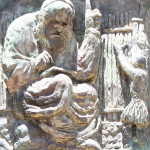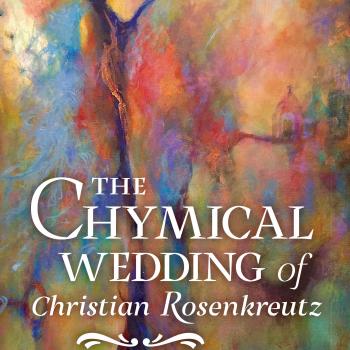Can you imagine a conference and exhibition at the New York Public Library titled, “Words and The Word: Literature and the Catholic Imagination?” Or a similar event at Lincoln Center titled, “Choirs of Angels: Music and the Catholic Imagination?” Or a Guggenheim Museum installation titled, “Dappled Things: Landscape Painting and the Catholic Imagination?” Or an exhibit at the Museum of Modern Art titled, “Through a Glass Darkly: Pop Art and the Catholic Imagination?”
I can. In fact, I’d line up to buy tickets to attend such exhibitions and conferences, and I suspect many other Catholics would, too.
Which is why I’m dumbfounded by the consternation over “Heavenly Bodies: Fashion and the Catholic Imagination,” a Metropolitan Museum of Art Costume Institute spring exhibition that, according to The Met, “will feature a dialogue between fashion and medieval art from The Met collection to examine fashion’s ongoing engagement with the devotional practices and traditions of Catholicism.” The key word here is dialogue. When a secular institution like The Met desires to foster a genuine dialogue between the modern world and the rich aesthetic tradition of the Catholic Church, it is an opening for genuine evangelization, one that Catholics should always embrace. Says who? Well, says Pope St. John Paul II for one, who wrote in his 1999 Letter to Artists:
Even beyond its typically religious expressions, true art has a close affinity with the world of faith, so that, even in situations where culture and the Church are far apart, art remains a kind of bridge to religious experience. In so far as it seeks the beautiful, fruit of an imagination which rises above the everyday, art is by its nature a kind of appeal to the mystery. Even when they explore the darkest depths of the soul or the most unsettling aspects of evil, artists give voice in a way to the universal desire for redemption.
It is clear, therefore, why the Church is especially concerned for the dialogue with art and is keen that in our own time there be a new alliance with artists … From such cooperation the Church hopes for a renewed “epiphany” of beauty in our time and apt responses to the particular needs of the Christian community …
… I turn to you, the artists of the world, to assure you of my esteem and to help consolidate a more constructive partnership between art and the Church. Mine is an invitation to rediscover the depth of the spiritual and religious dimension which has been typical of art in its noblest forms in every age. It is with this in mind that I appeal to you, artists of the written and spoken word, of the theatre and music, of the plastic arts and the most recent technologies in the field of communication. I appeal especially to you, Christian artists: I wish to remind each of you that, beyond functional considerations, the close alliance that has always existed between the Gospel and art means that you are invited to use your creative intuition to enter into the heart of the mystery of the Incarnate God and at the same time into the mystery of man.
Note that JPII at first addresses “the artists of the world,” without qualification. He invokes the universal spiritual roots of art, not just “sacred art,” much less “Catholic art.” He invites artists into a joint project of partnership and rediscovery. And he doesn’t limit his plea to artists who represent “traditional” forms of art, but includes the performing arts and even new forms of art grounded in modern technologies. To be sure, he makes a special appeal to “Christian artists,” reminding them that art is at the service of the Gospel – but, notably, not the Church – and especially the Gospel truth about the Incarnation and the “mystery of man” in all his dimensions.
In writing his letter, JPII no doubt had in mind Jacques Maritain’s still-fresh 1920 book, Art and Scholasticism. In Maritain’s classic eighth chapter, “Christian Art,” he undermines the notion that there is some special genus of “Christian art:”
By the words “Christian art” I do not mean Church art, art specified by an object, an end, and determined rules, and which is but a particular — and eminent — point of application of art. I mean Christian art in the sense of art which bears within it the character of Christianity. In this sense Christian art is not a species of the genus art: one does not say “Christian art” as one says “pictorial” or “poetic” art, “Gothic” or “Byzantine” art. A young man does not say to himself “I am going in for Christian art,” as he might say “I am going in for agriculture.” There is no school where one learns Christian art. Christian art is defined by the one in whom it exists and by the spirit from which it issues: one says “Christian art” or the “art of a Christian,” as one says the “art of the bee” or the “art of man.” It is the art of redeemed humanity. It is planted in the Christian soul, by the side of the running waters, under the sky of the theological virtues, amidst the breezes of the seven gifts of the Spirit. It is natural that it should bear Christian fruit.
Everything that is true, good, and beautiful already belongs to Christ, as St. Paul declares in I Corinthians 2:21-23: “So let no one boast about human beings, for everything belongs to you, Paul or Apollos or Cephas, or the world or life or death, or the present or the future: all belong to you, and you to Christ, and Christ to God.” Maritain a similar point here regarding “Christian art:”
Everything belongs to it, the sacred as well as the profane. It is at home wherever the ingenuity and the joy of man extend. Symphony or ballet, film or novel, landscape or still-life, puppet-show libretto or opera, it can just as well appear in any of these as in the stained- glass windows and statues of churches.
So, is Christian art an impossibility? No, says Maritain. But it arises not from a particular subject matter, much less a group of techniques or tools. It arises from the heart of a Christian!
If you want to make a Christian work, then be Christian, and simply try to make a beautiful work, into which your heart will pass; do not try to “make Christian.”
Do not make the absurd attempt to dissociate in yourself the artist and the Christian. They are one, if you are truly Christian, and if your art is not isolated from your soul by some system of aesthetics. But apply only the artist to the work; precisely because the artist and the Christian are one, the work will derive wholly from each of them.
Do not separate your art from your faith. But leave distinct what is distinct. Do not try to blend by force what life unites so well. If you were to make of your aesthetic an article of faith, you would spoil your faith. If you were to make of your devotion a rule of artistic activity, or if you were to turn desire to edify into a method of your art, you would spoil your art.
The entire soul of the artist reaches and rules his work, but it must reach it and rule it only through the artistic habitus. Art tolerates no division here. It will not allow any foreign element, juxtaposing itself to it, to mingle, in the production of the work, its regulation with art’s own. Tame it, and it will do all that you want it to do. Use violence, and it will accomplish nothing good. Christian work would have the artist, as artist, free.
Nevertheless art will be Christian, and will reveal in its beauty the interior reflection of the radiance of grace, only if it overflows from a heart suffused by grace. For the virtue of art which reaches it and rules it directly, presupposes that the appetite is rightly disposed with regard to the beauty of the work. And if the beauty of the work is Christian, it is because the appetite of the artist is rightly disposed with regard to such a beauty, and because in the soul of the artist Christ is present through love. The quality of the work is here the reflection of the love from which it issues, and which moves the virtue of art instrumentally. Thus it is by reason of an intrinsic superelevation that art is Christian, and it is through love that this superelevation takes place.
It follows from this that the work will be Christian in the exact degree in which love is vibrant.
How does all this apply to Anna Wintour, Donatella Versace, Rhianna, Katy Perry, and all the other designers and celebrities who showed up for Monday’s Met Gala 2018? First, we can’t know the content of individual hearts. Or at least I can’t. I’m certainly in no position to declare that Christian Siriano’s designs or Frances McDormand’s acting don’t spring from Christian hearts. While he lived, few people knew that Andy Warhol was a practicing Catholic who remained celibate his entire life. You wouldn’t get that from a Campbell’s Soup can print or a Marilyn Monroe poster, or even from a photograph taken at Studio 54. I find that the work of many people who walked Monday’s red carpet is beautiful and true, and therefore good, even when it appears to be ugly and even false. After all, on Calvary Roman soldiers created a tableau of incomprehensible ugliness, and yet for Christians it is the most beautiful scene possible.
Second, I do know that all men and women are ordered toward God. The extent to which truth, goodness, and beauty are compelling for them, even in their rebellion and sinfulness, is the extent to which they are moving toward, not away from, the One who made and loves them. The aesthetic sensibility of the Church is itself a reflection of Christ as Truth, Goodness, and Beauty personified. That, I believe, is why the Catholic Church’s iconography, sacramentals, architecture, music, and yes even fashion continue to fascinate modern men and women, even when her theology is difficult for them to grasp or accept. I don’t understand why we wouldn’t want to celebrate and encourage that.












